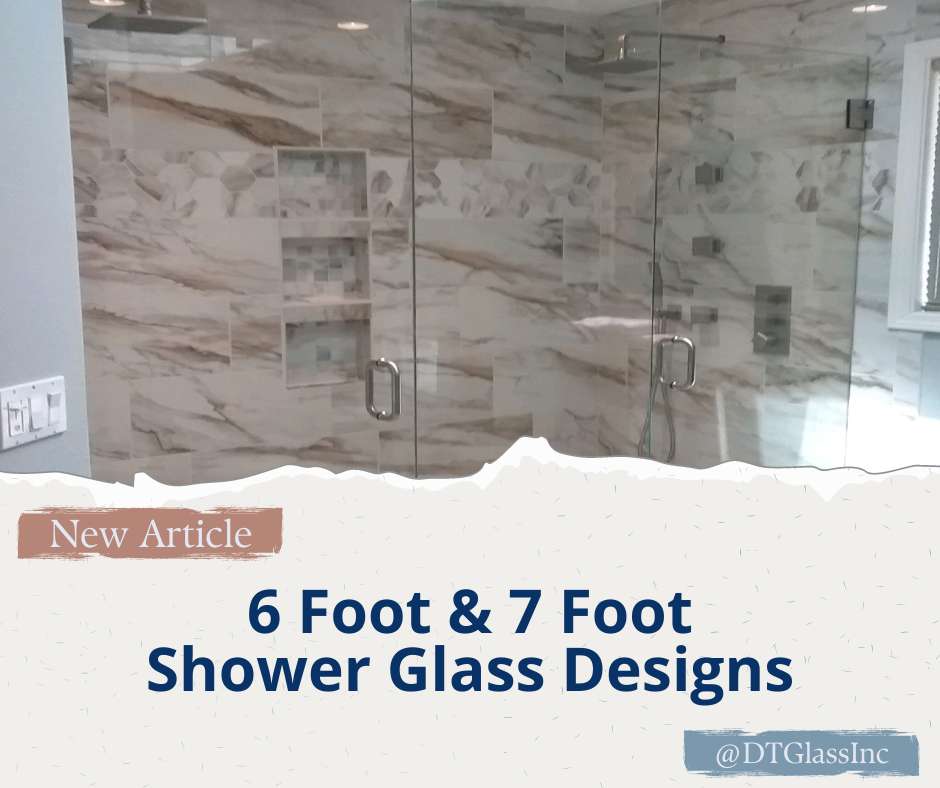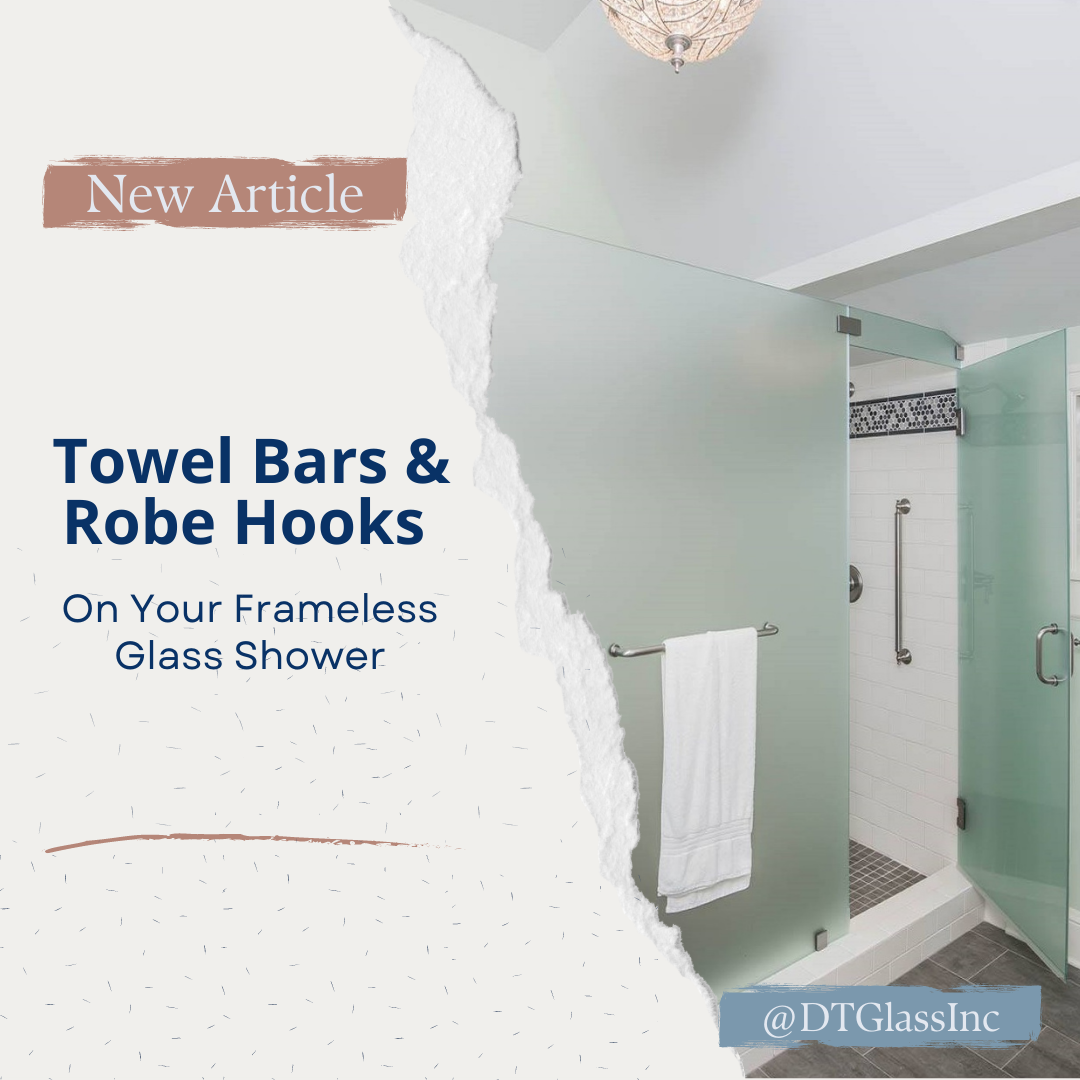
- glass@dtglassinc.com
- (503)-650-6373
STEAM SHOWERS: ENHANCING YOUR SHOWER EXPERENCE
By Shannon Mckinney – DT Glass, Inc.
Ready to elevate an everyday task to a luxurious experience? “Steam Therapy” boasts many benefits, from relieving stress, cleansing skin, and even improving circulation and burning calories! I’m not a doctor and I have not evaluated these claims, but I can tell you firsthand that it just feels great to be enveloped in the warmth of steam.
What is a steam shower? They look very similar to a standard frameless glass shower, except that the glass runs from floor to ceiling, wall to wall, and includes seals to minimize air escape. A steam generator is installed to produce the hot steam that fills the space while the user relaxes and unwinds. They are used in the same way as a sauna, with the difference of dry heat in the sauna, versus nearly 100% humidity in the steam shower. A nice benefit is that the steam shower also serves as a standard shower, so no need for two separate spaces.
Steam showers built with frameless glass, do have some limitations:
Single panes of glass are not the best insulators
Seals do not make the space 100% airtight

There’s a reason why saunas are traditionally built using thick wood walls with small windows. Wood units are built with insulation as a top priority. Glass steam showers have a different perspective. They are built with a high emphasis on style, along with the relative ease of building a space that’s only slightly different than a standard shower.
Having the right expectations for the finished product means recognizing that even with seals, there will be areas where steam is able to escape. This includes the spaces within hardware and the corners where multiple pieces of glass come together. If absolute airtightness is a requirement, then frameless glass is not the right building material.
As an alternative to a true steam shower, it’s possible to leave out the steam generator and simply create an enclosure where the steam from the shower itself is captured. Floor to ceiling, and wall to wall glass creates a cozy and warm shower experience. Anyone who enjoys long, hot showers, will benefit from a full shower enclosure versus filling the entire room with steam.
Steam management is important for every shower, but especially important in a steam shower. High humidity is wonderful during the shower but leads to mold and mildew if left too long. Below are items to incorporate in your steam shower design.
Necessary:
Tiled ceiling – This is an absolute must. Drywall will mold very quickly, no matter what type of paint or other coating is applied.
Sloped ceiling – A flat ceiling will collect moisture from the air and then “rain” on the occupant. The ceiling should be built with a slight slope to direct moisture to the back wall.
Fan inside the shower or very close to the door – When the shower is over, standing water should be dried quickly. Even waterproof surfaces can develop mold and mildew.
Optimal:
Limit ceiling height – High ceilings may seem luxurious, but you can’t enjoy steam that’s gathered above your head. Consider keeping the ceiling over the shower to no more than 8 feet.
Operable transom – A transom is the panel of glass that sits between the top of the door and the ceiling. Fixed transoms don’t move, but operable transoms can be manually tilted for letting steam out.
Airmada drying system – Our friends at Airmada have created a wonderful system of air jets to quickly and efficiently remove water from your shower.

Below are a few design aspects that come up more often when building a floor to ceiling shower.
Panel size can become an issue when a panel spans floor to ceiling. It’s possible that the size of glass versus the size of the bathroom makes it physically impossible to maneuver into place. There are times when a toilet or tub may need to be uninstalled until the glass is in place.
Ceiling clips are the preferred method for attaching the top of a glass panel. Clips have removeable front faces that can easily allow the panel to be positioned into place. Installing panels with a top channel is not always possible because of the extra room needed to tuck the glass into place.
Transom glass, in addition to letting steam out, can act as a buffer between the door and the ceiling. Without a transom, the swing door goes all the way to the ceiling. This can cause problems if the finished ceiling is not flat enough to allow the door to fully swing open, or if a fan or light hangs down in front of the door. Transom glass, either fixed or operable, creates a level surface to align with the door.

Designing a steam shower is a little more complex than a standard shower because of the need to integrate steam management, moisture management, and exhaust. However, if you put in the time to plan and coordinate, you will be rewarded for your efforts when your everyday shower feels more like a decadent spa day.
Intrigued by steam showers, but not sure if it’s the right choice for you or your space? At DT Glass we help homeowners, designers, and contractors think through the pros and cons to determine if a steam shower could be your dream shower.




























